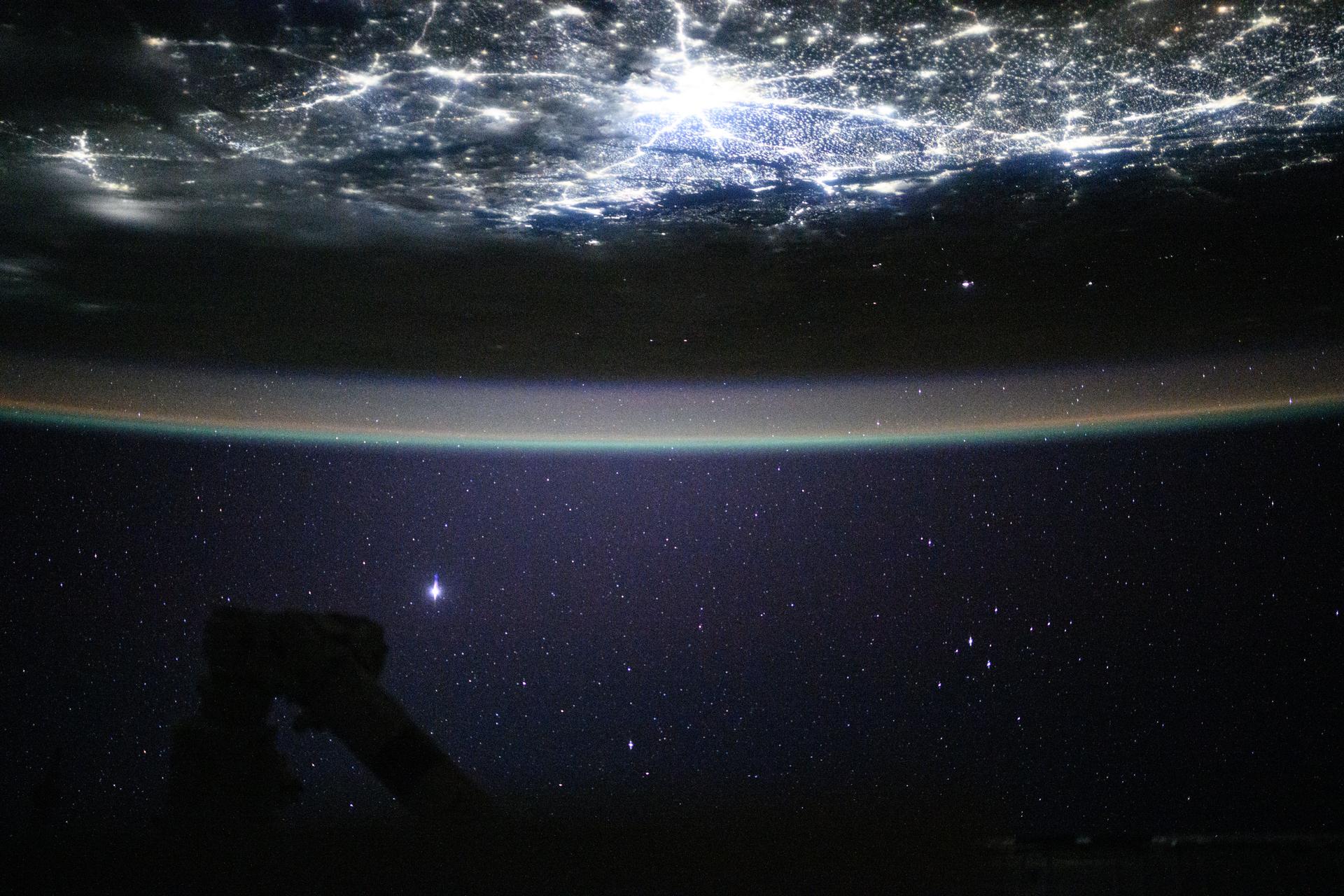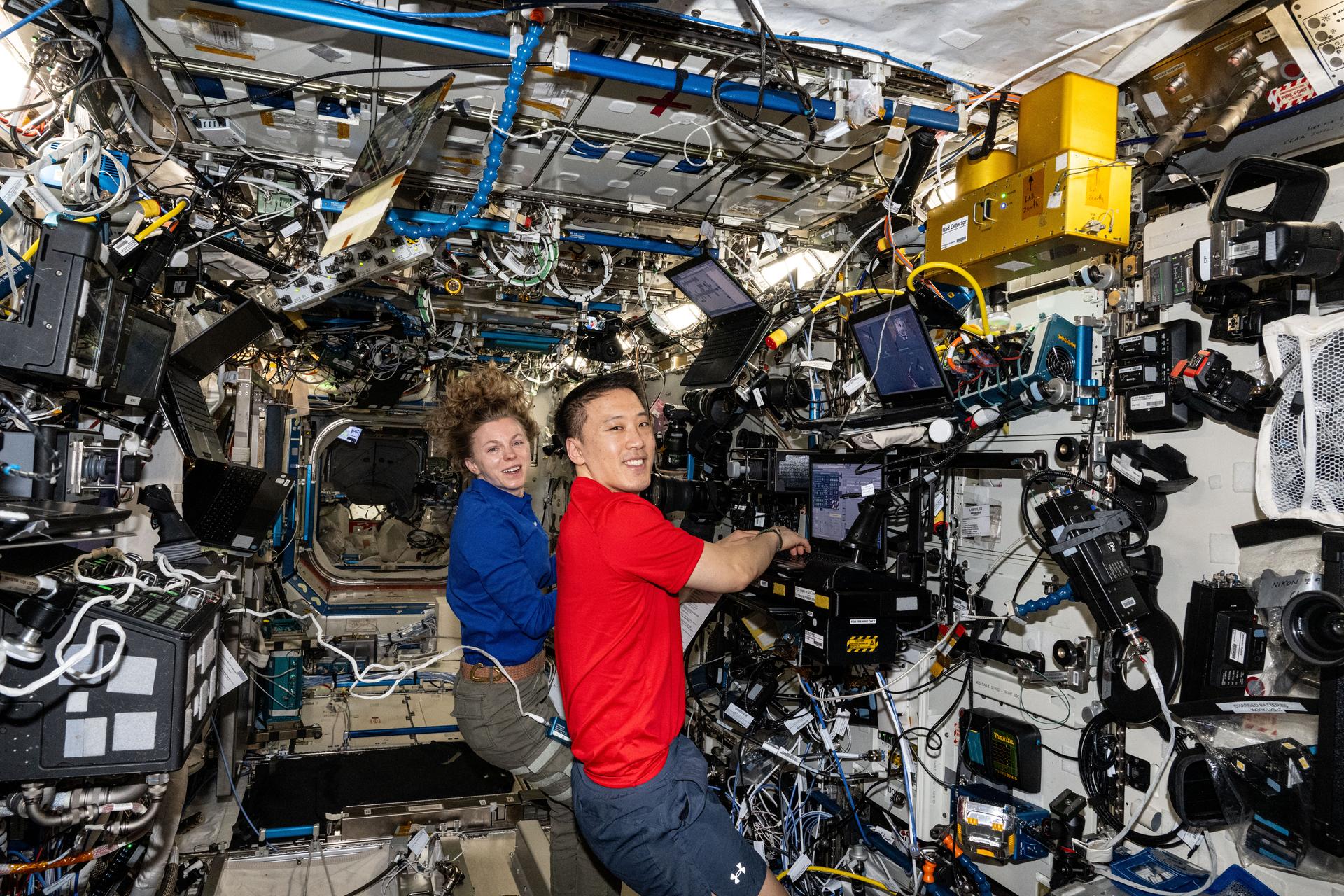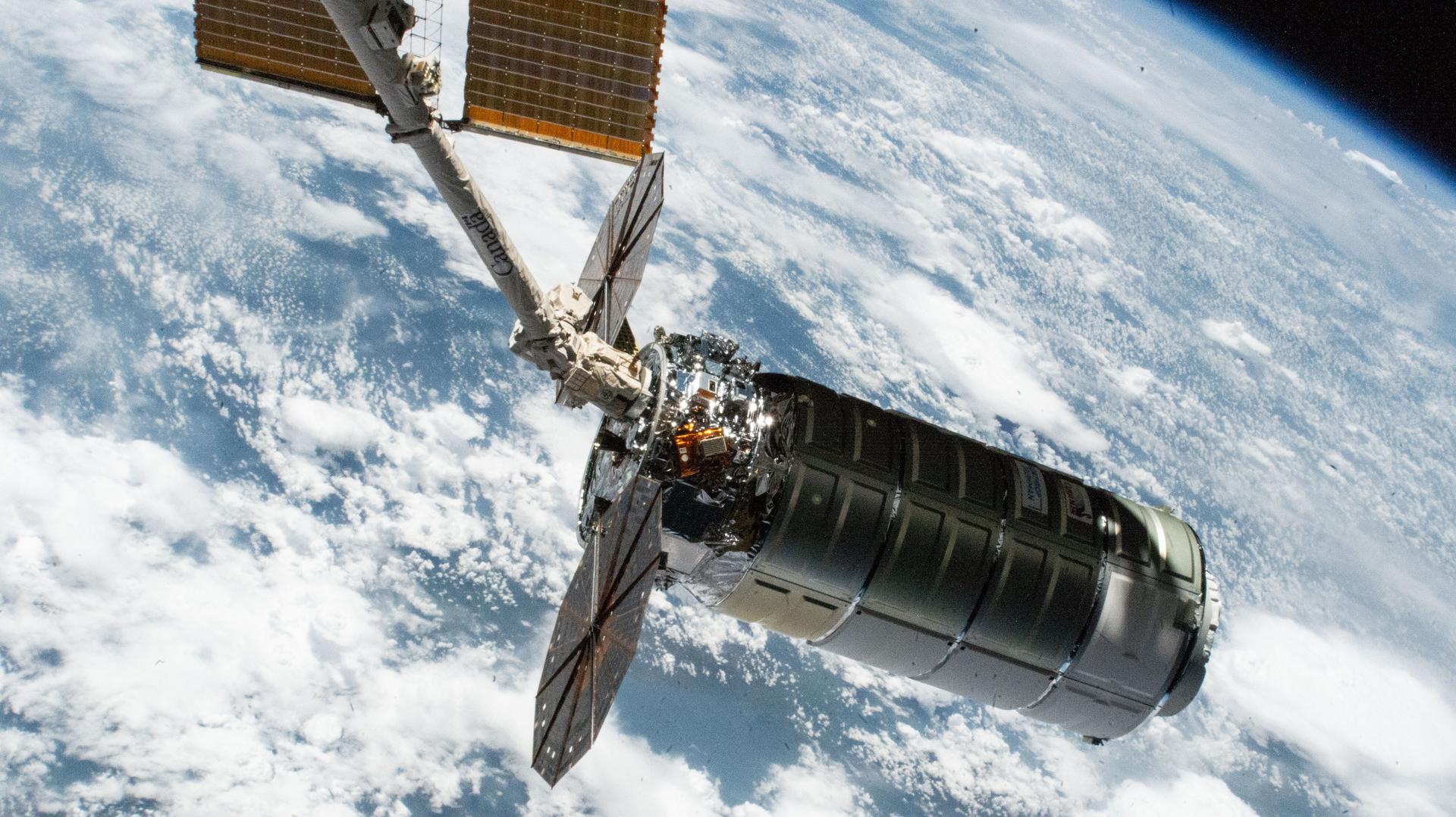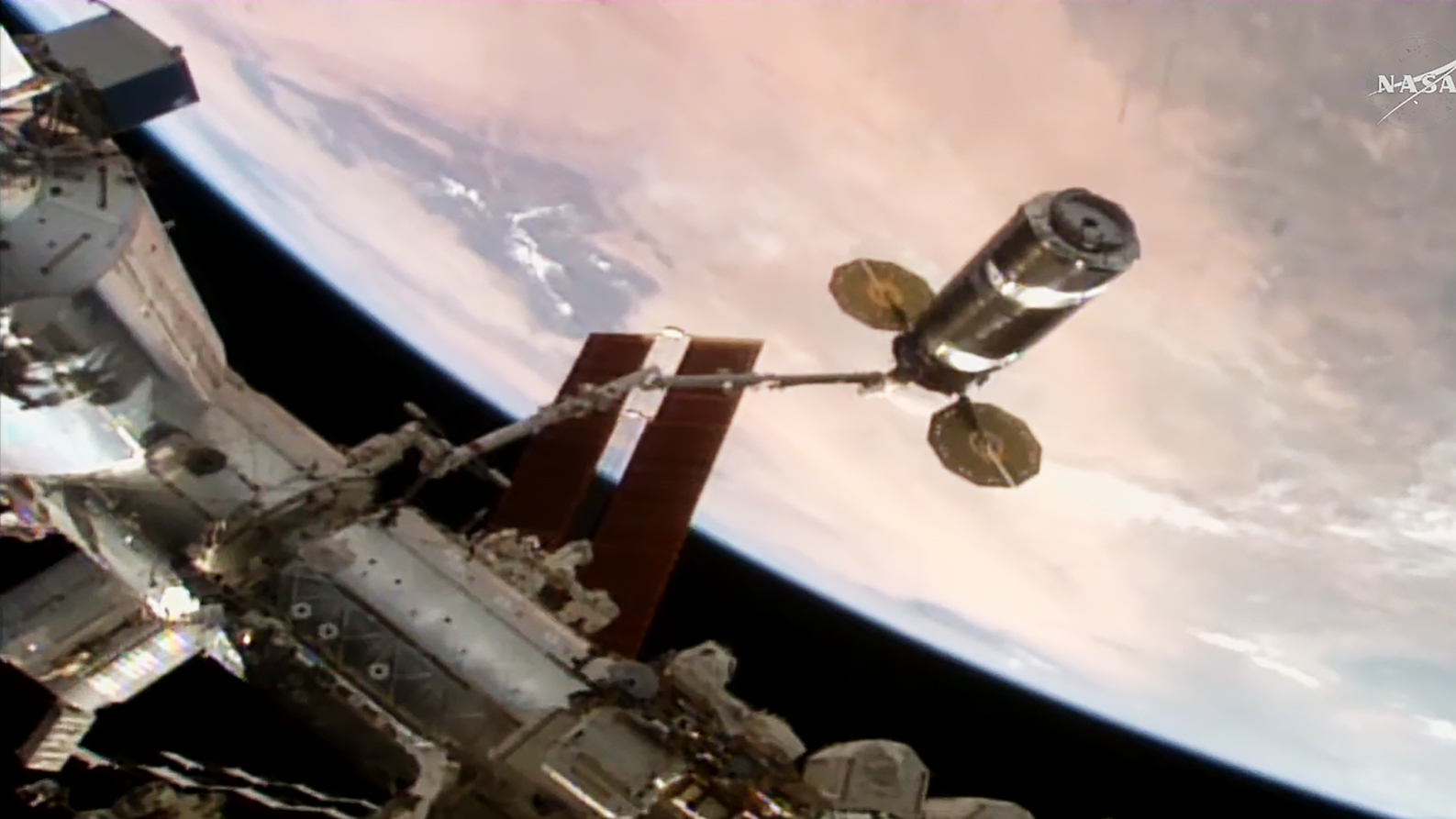Exercise Research and Computer Upgrades Keep Crew Busy on Tuesday
The Expedition 73 crew members explored how exercise in space affects the body, conducted an eye exam, and continued upgrading computer networking gear aboard the International Space Station on Tuesday. The orbital residents also transferred emergency gear into the SpaceX Dragon crew spacecraft, maintained life support equipment, and continued unpacking a Progress resupply ship.
Astronauts exercise daily for two hours aboard the orbital outpost to counteract accelerated muscle and bone loss caused by the lack of gravity. Researchers monitor crew members during their workouts to keep crews healthy and design effective workout plans for long duration space missions.
NASA Flight Engineer Zena Cardman participated in the exercise portion of the CIPHER suite of 14 human research studies working out on the advanced resistive exercise device and pedaling on the station’s exercise cycle for insights into her heart health. After her workout, she wore a sensor-packed Bio-Monitor headband and vest from the Canadian Space Agency beginning a 48-hour session measuring her health data. Doctors will be observing how her cardiovascular health is adjusting to microgravity and comparing it to physical data collected from other astronauts before, during, and after a spaceflight.
NASA Flight Engineer Mike Fincke led an eye exam and operated medical imaging gear that Flight Engineer Kimiya Yui of JAXA (Japan Aerospace Exploration Agency) peered into as personnel on the ground monitored in real time. Doctors are studying how microgravity affects the eye structure including the lens, retina, and optic nerve to understand potential vision issues during space missions and after the return to Earth.
Earlier, Yui was back inside the Kibo laboratory module on his second of replacing computer networking hardware. The ethernet hub upgrades will transmit data quicker and more efficiently throughout the orbital outpost.
Fincke and Cardman also joined NASA Flight Engineer Jonny Kim inside the SpaceX Dragon configuring the spacecraft for standard emergency preparations. The trio outfitted the vehicle with emergency documents, pressure indicators, and seat components in the unlikely event a crew would need to evacuate the orbital outpost.
Station Commander Sergey Ryzhikov spent his shift installing a vacuum pressure gauge in the Nauka science module and servicing environmental control and life support systems in the station’s Roscosmos segment. Flight Engineer Alexey Zubritsky was back inside the Progress 93 resupply ship unpacking some of the nearly three tons of food, fuel, and supplies it delivered on Sept. 13. Afterward, Zubritsky jogged on the Zvezda service module’s treadmill while wearing chest electrodes that measured his cardiac activity for a physical fitness test. Flight Engineer Oleg Platonov began his shift in Zvezda analyzing and testing the module’s power supply system before turning his attention to ongoing Earth observations photographing natural and man-made conditions on the seas, rivers, and mountainous areas.
Learn more about station activities by following the space station blog, @space_station on X, as well as the ISS Facebook and ISS Instagram accounts.
Get the latest from NASA delivered every week. Subscribe here.
Powered by WPeMatico
Mark A. Garcia








